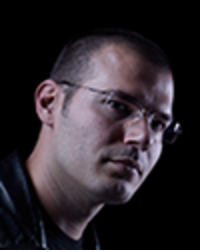 Prof. Domenico QUARANTA
Prof. Domenico QUARANTA
Accademia di Belle Arti di Brera
Notes on Postmedia and Other Posts
First used by Felix Guattari in 1996, the term Postmedia returned, with slightly different meanings, in the discussion about contemporary art in recent years, thanks to the contribution of authors like Rosalind Krauss, Peter Weibel and Lev Manovich; and anticipated the debate around terms like post-internet and post-digital. Today, all these labels look like to tell the same obvious truth: that the media / digital / internet revolution is over and that we, poor techno-slaves, have to deal with their political, economic, social and aesthetic consequences. In this lecture, I will roam freely through the post-something debate, trying to make sense of it and recover some nuances that may be worth consider.
After the boring stuff, I will take some minutes to illustrate a few projects that can help understanding what art, at its best, can be in a postmedia age, and that re-introduce a notion that has for long been rejected from the field of contemporary art: usefulness.
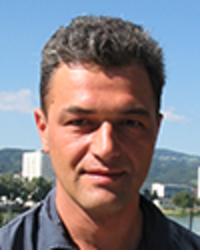 PhD Armin MEDOSCH
PhD Armin MEDOSCH
University of Arts in Belgrade
Art and Technopolitics
Armin Medosch, PhD, MA, is Professor of Theory and History of Art and Media at the Faculty of Media and Communications at Singidunum University, Belgrade. He is an artist, curator and author working in art and media art theory and network culture. His work as curator includes exhibitions such as Waves (Riga, 2006; Dortmund, 2008); and Fields (Riga Culture Capital 2014). He is initiator of the Technopolitics working group in Vienna and initiator and maintainer of the cooperative web-space thenextlayer.org. His book under the title “New Tendencies – Art at the Threshold of the Information Revolution”will be published by MIT Press in May 2016.
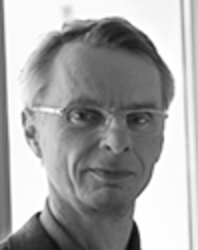 Prof. Dieter DANIELS
Prof. Dieter DANIELS
Academy of Visual Arts (HGB) in Leipzig
Revisiting the Readymade as Renewable Future
Originally, then term ‘ready-made’ was used to denote an off-the-shelf industrial product. As an example, in 1913, Henry Ford introduced the “moving assembly line” for standardized, low-cost motorcars, sold from stock instead of being produced on demand. Three years later, Marcel Duchamp, who had just arrived in the United States from Paris, first used the term ready-made for an artwork. Since then, the idea of the readymade has become central to the artistic practice of the twentieth and twenty-first century, because, in a world full of things, the act of choice becomes creative and individualistic – replacing the myth of the creatio ex nihilo. The lecture will discuss the shifting relations of commodities, consumerism, creativity and originality – with an outlook at the postmodern / postmedia, re-contextualised / re-mediated neo-readymades of contemporary (re-)appropriation art.
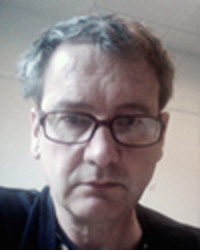 Dr. Geoff COX
Dr. Geoff COX
Aarhus University
Contemporary Conditions are Badly Known
Rather than discuss post-media conditions as such, the notion of ‘contemporary conditions’ is preferred to indicate the characteristic features of the historical present. The argument is that rather than concentrate on futures or whether something is sustainable, new or sufficiently different, the notion of the contemporary poses the question of when the present of a particular work begins and ends. Peter Osborne’s point is that the convergence and mutual conditioning of periodisations of art and the social relations of art have their roots in more general economic and socio-technological processes– that makes contemporary art possible, in the sense of an ‘art of contemporaneity’. “Contemporary art is badly known”, as he puts it. Thus ‘contemporaneity’ begins to describe the more complex and layered problem of different kinds of time existing simultaneously across different localities. Yet despite the sophistication of the approach, the discussion of technology is hardly developed at all. This talk aims to address contemporary conditions in terms of the significant role of contemporary media and computational technologies that further complicate the notion of the historical present and what constitutes contemporary art and the deep structures of temporality that render our present the way it is. The experience of time is necessarily a political struggle and importantly different epistemological registers open up further possibilities for transformation at different scales of operation.
Biography
Geoff Cox is Associate Professor in the School of Communication and Culture, and Participatory IT Research Centre, Aarhus University (DK), currently engaged on a 3 year research project The Contemporary Condition funded by the Danish Council for Independent Research (with Jacob Lund) – see http://contemporaneity.au.dk/. He is also Adjunct faculty Transart Institute (DE/US), an occasional artist/curator, and part of the self-institution Museum of Ordure. He is an editor for the DATA Browser book series (published by Autonomedia), and co-edited Economising Culture (2004), Engineering Culture (2005), Creating Insecurity (2009) and Disrupting Business (2013). He co-runs a yearly research workshop/conference in collaboration with transmediale and is co-editor with Christian Ulrik Andersen of the associated open access online journal APRJA. With Alex McLean, he wrote Speaking Code: coding as aesthetic and political expression (MIT Press 2013), and amongst other things is currently working on a multi-author book project about live coding.
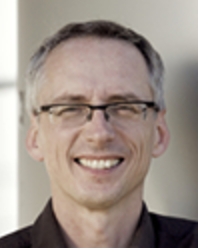 Dr. Andreas BROECKMANN
Dr. Andreas BROECKMANN
Leuphana University Lüneburg
Ecology/Machines: The Technologies of Eco Art
Throughout the 20th century, artists have reflected on the relation between humans and technology, and some of the results of this work have been summarised under the rubric of Machine Art. The notion of the “machine” marks a particular relationship between subjects and apparatuses, which deserves our heightened attention, not least because this notion seems to have gradually lost currency with the emergence of network, eco-, and bio-technological paradigms. Is the machine proper a phenomenon of the mechanical, pre-cybernetic age? And what would such a shift mean for the relationship between humans and technology articulated in Eco Art?
Biography
Dr. Andreas Broeckmann is an art historian and curator who lives in Berlin. He works as the curator of the Leuphana Arts Program in Lüneburg. He was the Founding Director of the Dortmunder U – Centre for Art and Creativity (2009-2011) and has curated exhibitions and festivals in major European venues, incl. transmediale and ISEA2010 RUHR. He holds a PhD in Art History from the University of East Anglia, Norwich/UK, and lectures internationally about the history of modern art, media theory, machine aesthetics, and digital culture.
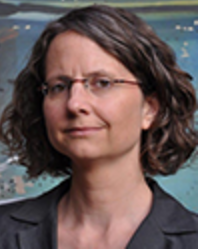 Prof. Katja KWASTEK
Prof. Katja KWASTEK
Vrije Universiteit Amsterdam
A Voyage to the North Sea. Aesthetics of Tidal Art
The concept of the renewable draws on natural processes such as biological growth as well as on geodynamic processes such as the tides. The latter have been subject to various forms of artistic interventions since the 1970s at the latest. Through exploring exemplary works of tidal art, this lecture will discuss in how far such artistic interrelations of natural, technological, and aesthetic timeframes may facilitate an understanding of the renewable as (also) an aesthetic category, and a potential characteristic of a work of art.
Biography
Katja Kwastek is professor of modern and contemporary art at the VU University Amsterdam, with a research focus on media aesthetics. Previously, she taught at Ludwig-Maximilians-University (Munich), Rhode Island School of Design (Providence), LBI Media.Art.Research (Linz), and Humboldt-University (Berlin). Publications include “Ohne Schnur – Art and Wireless Communication” (Revolver 2004) and “Aesthetics of Interaction in Digital Art” (MIT Press, 2013).
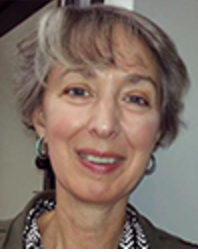 Prof. Martha BUSKIRK
Prof. Martha BUSKIRK
Montserrat College of Art in Beverly, Massachusetts
The Artist as Collector – Digital Edition
Artists have long been involved in collecting activities, including objects or works of art that complement their own creative pursuits, raw materials incorporated into assemblage-type constructions, and the gesture (rooted in the readymade and conceptual practices) of designating largely unaltered compilations as works. This talk examines how procedures of collecting, archiving, and appropriation, explored in conceptually based art of the 1960s–1980s, are being extended by artists who move back and forth between traditional spaces of display and networked environments. It also considers the interplay between art projects that gather material from digital realms and related popular forms of collecting or dissemination.
Biography
Martha Buskirk is Professor of art history and criticism at Montserrat College of Art. She is author of Creative Enterprise: Contemporary Art between Museum and Marketplace (Continuum, 2012) and The Contingent Object of Contemporary Art (MIT Press, 2003), and she is co-editor of The Duchamp Effect (with Mignon Nixon, MIT Press, 1996) and The Destruction of Tilted Arc: Documents (with Clara Weyergraf-Serra, MIT Press, 1990).